If you’re one of the many people who are drawn to the Rubber Plant (Ficus elastica) because of its ease of care, you’re in luck. This tough plant is very forgiving when it comes to watering. In fact, it’s one of the most drought-tolerant houseplants around.
Factors That Impact Rubber Plant Watering Frequency
Finally, the climate that you’re in will also have an impact, as a plant in a hotter, drier climate will need to be watered more often than one in a cooler, wetter climate. Keep all of these factors in mind when watering your rubber plant, and adjust the frequency as needed. When it comes to watering your rubber plant, there are a few factors that will impact how often you need to do it. The type of soil that you’re using will also affect how often you need to water, as a plant in well-draining soil will need to be watered less often than one in a more dense soil. The size of your plant will be one factor, as a larger plant will need more water than a smaller one. The pot that your plant is in will also play a role, as a plant in a smaller pot will need to be watered more often than one in a larger pot.
[1] Seasons
However, there are a few things to keep in mind when watering your rubber plant. They should be watered about once a week, or when the top inch of soil feels dry to the touch. In general, rubber plants like to be kept on the drier side.
During this time, you may need to water your rubber plant every 5-7 days. First, the plant will need more water during the growing season (spring and summer).
Second, the plant will need less water during the dormant season (winter). During this time, you can water your rubber plant every 2-3 weeks.
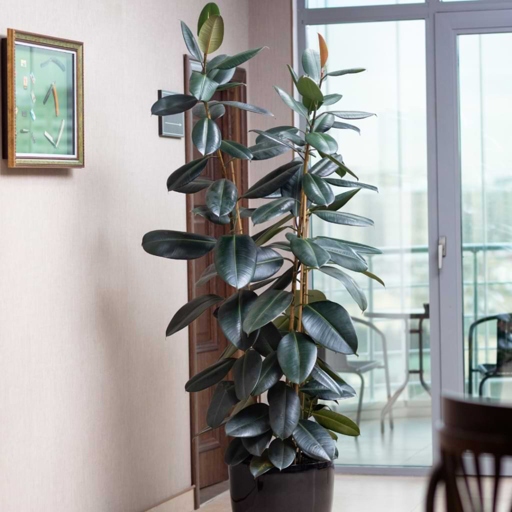
Finally, keep an eye on your plant. If it starts to droop or look wilted, it’s a good sign that it needs more water.
In Summer and Spring:
Water it once a week, giving it enough to soak the soil and keep it moist. If the plant starts to droop, water it more often. In the summer and spring, your rubber plant will need more water than it does in the fall and winter.
In Fall and Winter
How much you water your rubber plant during these months will depend on a few factors, including the temperature and humidity levels in your home. If your rubber plant is in a room that is particularly dry, you may need to water it more often than if it were in a room with higher humidity. When it comes to rubber plant watering, the fall and winter months are the time to cut back. Use your judgement and keep an eye on the plant to determine how often it needs to be watered.
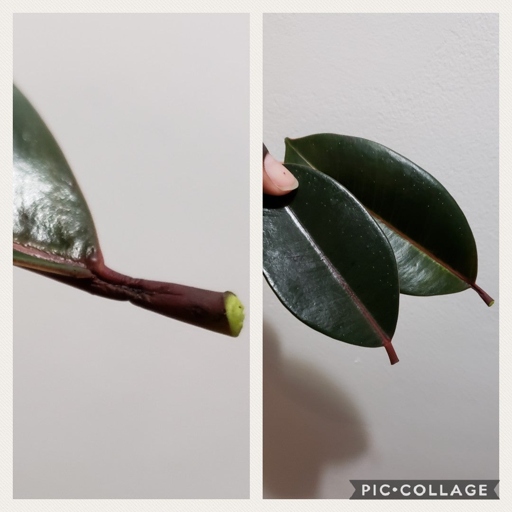
Be sure to give the plant a good soaking, until water runs out of the drainage holes at the bottom of the pot. As a general rule of thumb, you should water your rubber plant about once a week in the fall and winter. If the plant looks wilted or the leaves start to droop, it’s a good indication that it needs to be watered. Allow the plant to drain thoroughly before putting it back in its spot.
Overwatering is one of the most common problems people have with their rubber plants, so it’s better to err on the side of caution. If you’re not sure how often to water your rubber plant, err on the side of too little rather than too much.
During Flowering
During the flowering stage, water your rubber plant about once a week or when the top inch of soil feels dry. Fertilize your rubber plant every other month during the flowering stage with a balanced fertilizer. Allow the water to soak through the drainage holes to reach the roots. Never let your plant sit in water, as this can lead to root rot.
[2] Size of The Plant
When it comes to rubber plants, size does matter when it comes to watering. A small plant will need less water than a large one, so be sure to take that into account when you’re watering your plant. A large plant will need to be watered more often than a small one. The frequency of watering will also depend on the size of the plant.
When it comes to rubber plants, size does matter when it comes to watering. A small plant will need less water than a large one, so be sure to take that into account when you’re watering your plant. A large plant will need to be watered more often than a small one. The frequency of watering will also depend on the size of the plant.
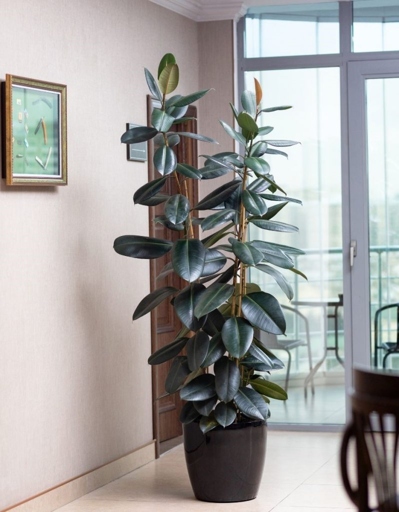
When it comes to rubber plants, size does matter when it comes to watering. A small plant will need less water than a large one, so be sure to take that into account when you’re watering your plant. A large plant will need to be watered more often than a small one. The frequency of watering will also depend on the size of the plant.
[3] Temperature
When it comes to watering your rubber plant, the temperature is important to keep in mind. If the water is too cold, the plant can suffer from shock. The best temperature for watering your rubber plant is room temperature. If the water is too hot, the plant can suffer from leaf scorch.
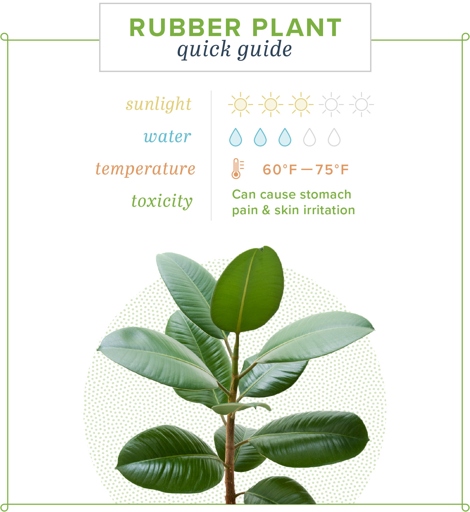
If you’re not sure what room temperature is, a good rule of thumb is to water your plant when the temperature is above 60 degrees Fahrenheit. In general, rubber plants like to be kept on the drier side, so you don’t need to water them as often as other plants. Once a week should be sufficient.
[4] Humidity
The ideal humidity level for a rubber plant is between 40 and 50 percent. Symptoms of too little humidity include browning leaves, wilting, and dry, brittle stems. If the air in your home is too dry, your rubber plant will suffer. Indoor plants, such as rubber plants, thrive in humid environments.
A pebble tray is a shallow tray filled with pebbles and water. To increase the humidity around your rubber plant, you can use a humidifier or place the plant on a pebble tray. The water evaporates and increases the humidity around the plant.

If you live in a very dry climate, you may need to water your rubber plant more often than plants in more humid environments. Be sure to empty any water that collects in the saucer beneath the pot, as too much water can lead to root rot. Water your plant when the top inch of soil is dry.
[5] Location of The Plant
When it comes to watering your Rubber Plant, be sure to water it thoroughly, but don’t allow the soil to become soggy. The Rubber Plant (Ficus elastica) is a popular indoor plant that is easy to care for. It can tolerate some direct sun, but it is best to avoid placing it in a spot that gets too much direct sunlight, as this can cause the leaves to scorch. The Rubber Plant is also not a fan of drafts, so avoid placing it near a door or window that is prone to drafts. Allow the top inch or so of soil to dry out in between waterings. It is important to know where to place your Rubber Plant, as it will need some bright indirect light.
[6] Type of Pot
There are a variety of pots that can be used to grow rubber plants, each with its own set of benefits and drawbacks.
Terra cotta pots are a popular choice for rubber plants, as they are attractive and allow the plant to breathe. However, they can be heavy and difficult to move, and they may dry out quickly.
Plastic pots are lightweight and easy to move, but they can trap moisture and lead to root rot.
However, they can be expensive, and they may need to be treated to prevent rot. Wooden pots are another option, and they offer a more natural look.
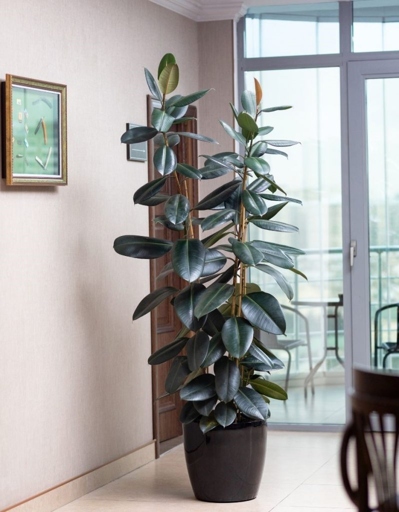
Ultimately, the best pot for a rubber plant is one that meets the plant’s needs and the gardener’s preferences.
[7] Size of the Pot
A small pot will dry out faster than a large pot, so you’ll need to water more often. If the soil is dry, it’s time to water. A large pot will hold more moisture, so you can water less often. If the soil is still moist, you can wait a few days. The best way to determine how often to water your rubber plant is to feel the soil. When it comes to watering your rubber plant, the size of the pot is important to consider.
[8] Type of Potting Mix
This type of mix is ideal for rubber plants because it retains moisture well and drains quickly. The most common type is a peat-based mix, which is made up of sphagnum peat moss, perlite, and vermiculite. When it comes to potting mix, there are a few different types that can be used for rubber plants.

Another type of potting mix that can be used for rubber plants is a coco coir-based mix. Coco coir-based mixes retain moisture well and provide good drainage. This type of mix is made from coconut fiber and is a sustainable option for those looking for an eco-friendly potting mix.
No matter which type of potting mix you choose, be sure to water your rubber plant regularly. Watering once a week should be sufficient, but be sure to check the soil regularly to see if it needs more or less water.
How Do You Know If a Rubber Plant Needs Watering?
Finally, take a close look at the stem. If it’s shriveled or wrinkled, that means the plant needs more water. If it’s dry to the touch, it’s time to water. If you’re unsure whether your rubber plant needs watering, there are a few telltale signs to look for. First, check the soil. Another indicator is the leaves. If they’re drooping or wilting, that’s a sign the plant is thirsty.

Water it thoroughly, until water runs out of the drainage holes at the bottom of the pot. How often you need to water will depend on the plant’s size, the type of pot it’s in, the temperature and humidity of your home, and how much light it’s getting. Then, let the soil dry out before watering again. If you see any of these signs, it’s time to give your rubber plant a drink. In general, rubber plants need to be watered every one to two weeks.
[1] Test Moisture Level using your Finger or Stick
If you’re wondering whether it’s time to water your rubber plant, there are a couple of ways to test the moisture level of the soil. If they’re drooping or wilting, that’s a sign that the plant needs more water. One way is to use your finger or a stick to insert into the soil. Another way to test the moisture level is to take a look at the leaves. If the soil is dry a few inches down, it’s time to water the plant.
[2] Potting Soil Color
White potting soil is made up of inorganic materials, such as perlite and vermiculite. Black potting soil is the most common type, and it is made up of organic matter, such as composted leaves and bark. Brown potting soil is also made up of organic matter, but it also contains inorganic materials, such as sand and clay. When it comes to potting soil, there are three main colors: black, brown, and white.

Therefore, if you are using black potting soil, you will need to water your rubber plant less often than if you are using brown or white potting soil. Black potting soil holds more water than brown or white potting soil. When it comes to watering your rubber plant, it is important to know what type of potting soil you are using.
[3] Wilting or Drooping Leaves
How much and how often to water your rubber plant will depend on a few factors, such as the size of the plant, the type of potting mix, and the climate. If you notice your rubber plant’s leaves drooping or wilting, it’s a sign that the plant is thirsty and needs more water. In general, rubber plants need to be watered about once a week, allowing the potting mix to dry out slightly between waterings.
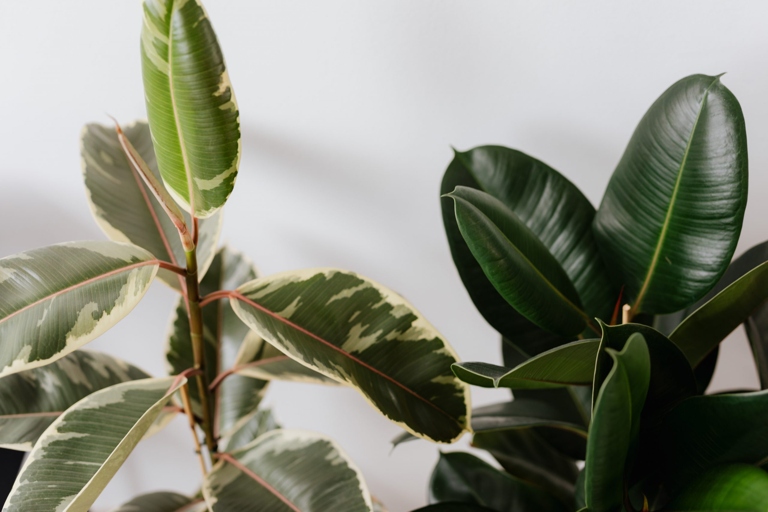
When in doubt, check the soil before watering to see if it’s dry to the touch. If you’re unsure how often to water your rubber plant, it’s best to err on the side of too little water rather than too much. If it is, it’s time to give your rubber plant a drink. Overwatering can lead to root rot, which can be fatal to the plant.
[4] Brown Leaf Tips
If you’re watering your plant too frequently, the roots will become waterlogged and the leaves will start to turn brown. If you notice your rubber plant’s leaves turning brown at the tips, it’s likely due to one of two reasons: too much or too little water. On the other hand, if you’re not watering your plant enough, the leaves will also start to turn brown.
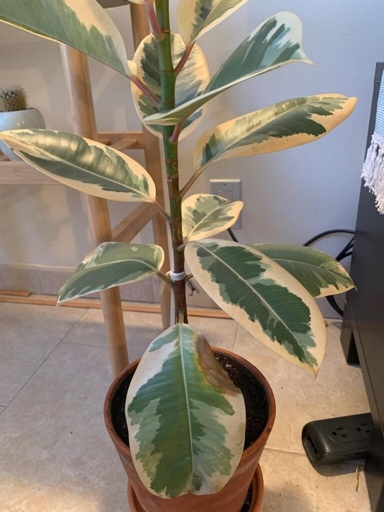
The best way to determine how often to water your rubber plant is to check the soil before watering. If the soil is still moist, wait a few days before watering again. If the soil is dry to the touch, it’s time to water.
If you think you’re watering your rubber plant too frequently, try letting the soil dry out completely between waterings. This will help to prevent the roots from becoming waterlogged. If you think you’re not watering your plant enough, try increasing the frequency of your waterings.
[5] Leaves Wrinkled
If you notice your rubber plant’s leaves are wrinkled, it’s a sign that the plant is thirsty. Allow the plant to drain for a few minutes, then empty out any water that remains in the saucer. Rubber plants like to dry out a bit between waterings, so wait until the top inch or so of soil feels dry before watering again. Water your rubber plant thoroughly, until water runs out of the drainage holes at the bottom of the pot.
[6] Leaves Turning Brown or Yellow
There are a few possible reasons for this, including too much or too little water, too much sun, or pests. Leaves turning brown or yellow is a common problem with rubber plants.

If you’re not watering enough, the leaves will start to turn brown. If you’re watering too frequently, the roots may be waterlogged and the leaves will start to turn yellow. If your rubber plant’s leaves are turning brown or yellow, the first thing to do is check the watering schedule.
If the plant is in direct sunlight, the leaves can start to scorch. Move the plant to a location with indirect light and see if the leaves start to improve. Another possible reason for leaves turning brown or yellow is too much sun.
If you see any insects on the plant, treat with an insecticide according to the label directions. Finally, pests can also cause leaves to turn brown or yellow.
[7] Leaves Drying Out and Falling off
If your rubber plant’s leaves are drying out and falling off, it’s likely that you’re not watering it enough. If you’re unsure whether your plant needs water, it’s better to err on the side of too little water rather than too much. Rubber plants need to be watered about once a week, or when the top inch of soil feels dry to the touch.

If the soil is soggy or waterlogged, it’s time to cut back on watering. If you notice that the leaves are yellowing or falling off, check the soil to see if it’s too wet. Overwatering is a common mistake when it comes to rubber plants.
If you think you may be underwatering your rubber plant, increase the frequency of watering gradually until you see signs of new growth. Once your plant is back on track, be sure to stick to a regular watering schedule to prevent future problems.
[8] Measure the Weight of The Pot
Too much or too little water can lead to problems, so it’s important to get the balance just right. When it comes to rubber plants, one of the most important things to keep in mind is how much water they need.
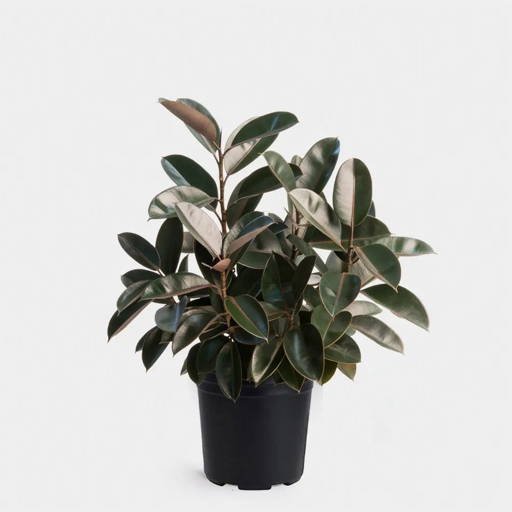
One way to determine how much water your rubber plant needs is to measure the weight of the pot before and after watering. A good rule of thumb is to water until the pot is about 10% lighter than it was before watering.
If you’re not sure how often to water, a good general guideline is to water once a week, or when the pot feels light. However, this will vary depending on the size of the pot, the type of potting mix, and the temperature and humidity of your home.
Yellow or wilted leaves are a sign of too much water, while brown or crispy leaves are a sign of too little water. If you think your rubber plant is getting too much or too little water, take a look at the leaves.
By taking the time to measure the weight of your rubber plant’s pot, you can be sure you’re giving it the right amount of water to stay healthy and thrive.
[9] Use Moisture Meter
This will help you determine how much water your plant needs, and how often to water it. When it comes to watering your rubber plant, it’s important to use a moisture meter.
Here’s how to use a moisture meter:

1. Stick the moisture meter into the soil near your rubber plant.
Check the meter to see how much moisture is in the soil. 2.
Water your rubber plant accordingly. 3.
4. Repeat this process every few days to make sure your rubber plant is getting the right amount of water.
[10] Use an App
PlantSnap is a free app that can help you identify and care for your plants. Just snap a photo of your plant and the app will provide you with information on how to water it and how often. If you’re looking for an easy way to keep your rubber plant healthy and hydrated, there’s an app for that!
All you need to do is follow the schedule and your plant will be healthy and happy. Just enter the plant’s name and the app will give you a watering schedule. If you’re not sure how much water your rubber plant needs, the app can also help you out.
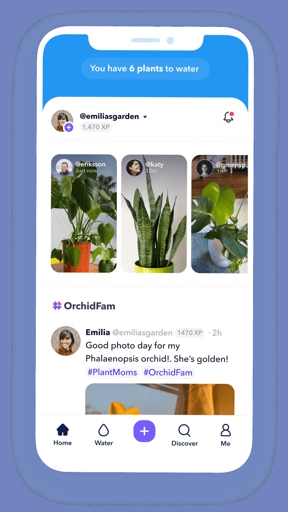
The app can also help you troubleshoot any problems you’re having with your plant. If your plant is wilting, for example, the app can help you figure out whether it’s getting too much or too little water.
It’s a helpful tool that will make your life a lot easier. So if you’re looking for an easy way to take care of your rubber plant, be sure to download PlantSnap.
Signs of Overwatered Rubber Plant
This is a sign of too much water and can lead to root rot. If you think you may have overwatered your rubber plant, there are a few things you can look for. If you see any of these signs, it’s important to adjust your watering schedule accordingly. This is a sign of water stress and can be caused by either too much or too little water. The first is wilting leaves. The third is browning leaves. The second is yellowing leaves. If the leaves are drooping or falling off, it’s a sign that the plant is not getting enough water.
How to Water Rubber Plant
If you have a rubber plant, you might be wondering how to water it. Here are a few tips to help you water your rubber plant:
If it is, then it’s time to water your plant. First, check the soil to see if it is dry.
Next, water your plant slowly and evenly until the water runs out of the bottom of the pot.
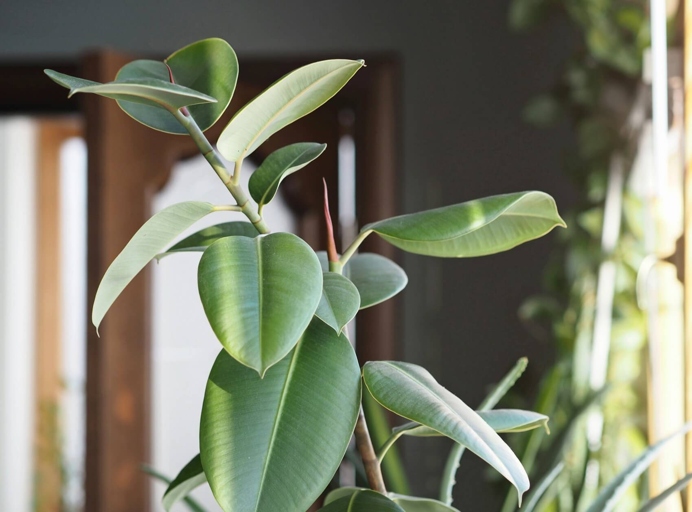
Finally, let the plant drain for a few minutes before putting it back in its spot.
Water your rubber plant once a week, or as needed.
[1] Watering from Above
Allow the soil to dry out slightly between waterings. Watering from above is the most common and recommended method for watering rubber plants. It is best to water rubber plants in the morning, giving the plant time to absorb the water before the heat of the day. Rubber plants should be watered thoroughly, until water runs out of the drainage holes in the bottom of the pot.
[2] Watering from Below
You can also use a watering can to water from below. Be sure to empty any water that collects in the saucer beneath the plant. To water from below, simply place your rubber plant in a sink or tub and let the water run over the roots for a few minutes. By watering from below, you can avoid getting water on the leaves, which can cause them to rot. Watering from below is a great way to water your rubber plant.
[3] Self-Watering Pots
Rubber plants are native to Malaysia, India, and northeast India. They can grow to be quite large, so they’re often used as houseplants. If you’re looking for a low-maintenance plant, a rubber plant is a great option. They’re also known as ficus elastica, and they’re a type of fig.
One of the best things about rubber plants is that they’re self-watering. That means you don’t have to worry about watering them too often or not enough. Just fill the pot with water and the plant will take care of the rest.
Water the plant once a week, and then let the soil dry out completely before watering again. If the leaves start to droop, that’s a sign that the plant needs more water. If you’re not sure how often to water your rubber plant, here’s a quick guide.
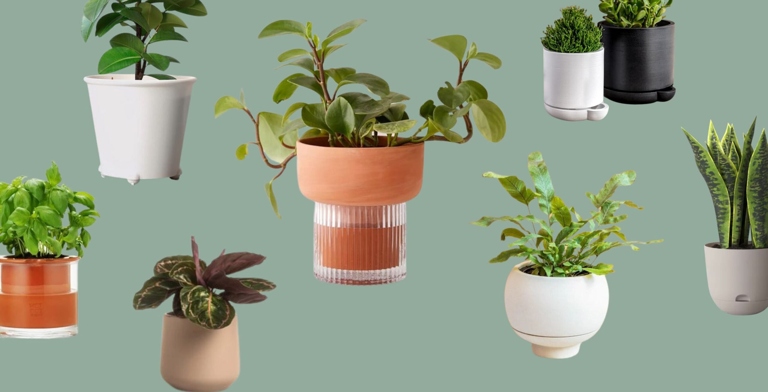
Just remember to water it once a week, and you’ll have a happy and healthy plant. So if you’re looking for a low-maintenance plant that’s easy to care for, a rubber plant is a great option.
Golden Rules of Watering Rubber Plants
If you’re wondering how to water a rubber plant, you’re not alone. Here are a few golden rules to follow when watering your rubber plant. But even rubber plants need a little TLC when it comes to watering. These popular houseplants are known for their tough, drought-resistant nature.
If the soil is dry to the touch, it’s time to water. Rubber plants like to dry out between waterings, so feel the soil before adding any water. First, always check the soil before watering.
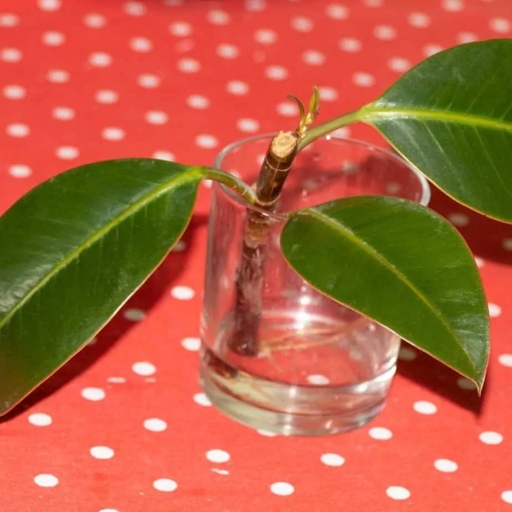
Water until it begins to drip out of the drainage holes in the bottom of the pot. Second, water rubber plants thoroughly, but don’t overdo it. Then, empty out any water that collects in the saucer under the pot.
Finally, don’t forget to fertilize your rubber plant every few months. Just be sure to follow the directions on the package. A good quality, all-purpose fertilizer will do the trick.
By following these simple tips, you can keep your rubber plant healthy and happy for years to come.
Watering Rubber Plants After Repotting
Watering Rubber Plants After Repotting
This will help the plant to recover from the stress of being transplanted and will also help it to start growing in its new pot. It is important to water your rubber plant after repotting it.
A good rule of thumb is to water the plant until the water starts to drain out of the bottom of the pot. How much water your rubber plant needs after repotting will depend on the size of the plant and the pot.
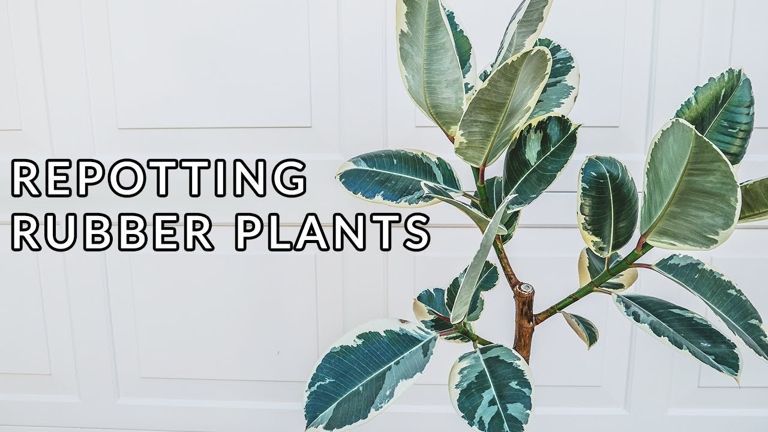
If the plant is in a small pot, you may need to water it more often. A good rule of thumb is to water the plant every week. How often you need to water your rubber plant will also depend on the size of the plant and the pot.
If you are not sure how much or how often to water your rubber plant, ask a nursery or garden center for advice.
Final Words
When it comes to watering your rubber plant, there are a few things to keep in mind. In general, you should water your rubber plant every one to two weeks. Finally, when it comes to how much water to use, err on the side of too little rather than too much. First, how often you water will depend on the plant’s size, pot size, and the climate. Second, be sure to use lukewarm water when watering your plant. Overwatering can lead to root rot, so it’s better to err on the side of caution. Cold water can shock the plant and cause the leaves to drop.
Frequently Asked Questions
1. How much water does a rubber plant need?
A rubber plant needs about 1 to 2 cups of water per week.
2. How often should I water a rubber plant?
A rubber plant should be watered every 7 to 10 days.
3. What are the signs that a rubber plant needs water?
The leaves of a rubber plant will start to droop when it needs water.
4. Can I overwater a rubber plant?
Yes, it is possible to overwater a rubber plant. If the leaves of the plant start to turn yellow or brown, this is a sign that it is getting too much water.
5. What type of water is best for a rubber plant?
Rubber plants prefer filtered or distilled water.
Final thoughts
When it comes to rubber plant watering, the general rule of thumb is to water when the top inch of soil is dry. However, you should always check the moisture level of your plant before watering to avoid overwatering. If you’re unsure how often to water your rubber plant, err on the side of too little water rather than too much.
